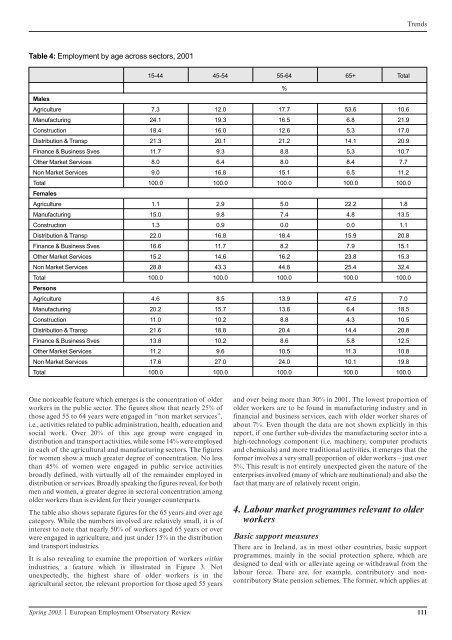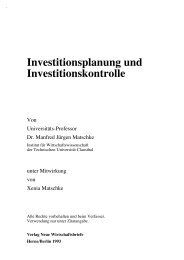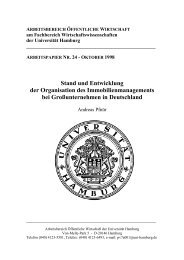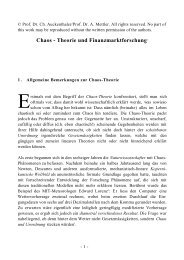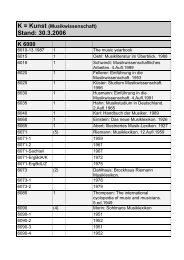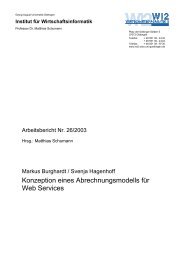FRANCE The
FRANCE The
FRANCE The
Create successful ePaper yourself
Turn your PDF publications into a flip-book with our unique Google optimized e-Paper software.
Table 4: Employment by age across sectors, 2001<br />
Males<br />
One noticeable feature which emerges is the concentration of older<br />
workers in the public sector. <strong>The</strong> figures show that nearly 25% of<br />
those aged 55 to 64 years were engaged in “non market services”,<br />
i.e., activities related to public administration, health, education and<br />
social work. Over 20% of this age group were engaged in<br />
distribution and transport activities, while some 14% were employed<br />
in each of the agricultural and manufacturing sectors. <strong>The</strong> figures<br />
for women show a much greater degree of concentration. No less<br />
than 45% of women were engaged in public service activities<br />
broadly defined, with virtually all of the remainder employed in<br />
distribution or services. Broadly speaking the figures reveal, for both<br />
men and women, a greater degree in sectoral concentration among<br />
older workers than is evident for their younger counterparts.<br />
<strong>The</strong> table also shows separate figures for the 65 years and over age<br />
category. While the numbers involved are relatively small, it is of<br />
interest to note that nearly 50% of workers aged 65 years or over<br />
were engaged in agriculture, and just under 15% in the distribution<br />
and transport industries.<br />
It is also revealing to examine the proportion of workers within<br />
industries, a feature which is illustrated in Figure 3. Not<br />
unexpectedly, the highest share of older workers is in the<br />
agricultural sector, the relevant proportion for those aged 55 years<br />
15-44 45-54 55-64 65+ Total<br />
Agriculture 7.3 12.0 17.7 53.6 10.6<br />
Manufacturing 24.1 19.3 16.5 6.8 21.9<br />
Construction 18.4 16.0 12.6 5.3 17.0<br />
Distribution & Transp 21.3 20.1 21.2 14.1 20.9<br />
Finance & Business Sves 11.7 9.3 8.8 5.3 10.7<br />
Other Market Services 8.0 6.4 8.0 8.4 7.7<br />
Non Market Services 9.0 16.8 15.1 6.5 11.2<br />
Total 100.0 100.0 100.0 100.0 100.0<br />
Females<br />
Agriculture 1.1 2.9 5.0 22.2 1.8<br />
Manufacturing 15.0 9.8 7.4 4.8 13.5<br />
Construction 1.3 0.9 0.0 0.0 1.1<br />
Distribution & Transp 22.0 16.8 18.4 15.9 20.8<br />
Finance & Business Sves 16.6 11.7 8.2 7.9 15.1<br />
Other Market Services 15.2 14.6 16.2 23.8 15.3<br />
Non Market Services 28.8 43.3 44.8 25.4 32.4<br />
Total 100.0 100.0 100.0 100.0 100.0<br />
Persons<br />
Agriculture 4.6 8.5 13.9 47.5 7.0<br />
Manufacturing 20.2 15.7 13.8 6.4 18.5<br />
Construction 11.0 10.2 8.8 4.3 10.5<br />
Distribution & Transp 21.6 18.8 20.4 14.4 20.8<br />
Finance & Business Sves 13.8 10.2 8.6 5.8 12.5<br />
Other Market Services 11.2 9.6 10.5 11.3 10.8<br />
Non Market Services 17.6 27.0 24.0 10.1 19.8<br />
Total 100.0 100.0 100.0 100.0 100.0<br />
Spring 2003 | European Employment Observatory Review 111<br />
%<br />
Trends<br />
and over being more than 30% in 2001. <strong>The</strong> lowest proportion of<br />
older workers are to be found in manufacturing industry and in<br />
financial and business services, each with older worker shares of<br />
about 7%. Even though the data are not shown explicitly in this<br />
report, if one further sub-divides the manufacturing sector into a<br />
high-technology component (i.e. machinery, computer products<br />
and chemicals) and more traditional activities, it emerges that the<br />
former involves a very small proportion of older workers – just over<br />
5%. This result is not entirely unexpected given the nature of the<br />
enterprises involved (many of which are multinational) and also the<br />
fact that many are of relatively recent origin.<br />
4. Labour market programmes relevant to older<br />
workers<br />
Basic support measures<br />
<strong>The</strong>re are in Ireland, as in most other countries, basic support<br />
programmes, mainly in the social protection sphere, which are<br />
designed to deal with or alleviate ageing or withdrawal from the<br />
labour force. <strong>The</strong>re are, for example, contributory and noncontributory<br />
State pension schemes. <strong>The</strong> former, which applies at


